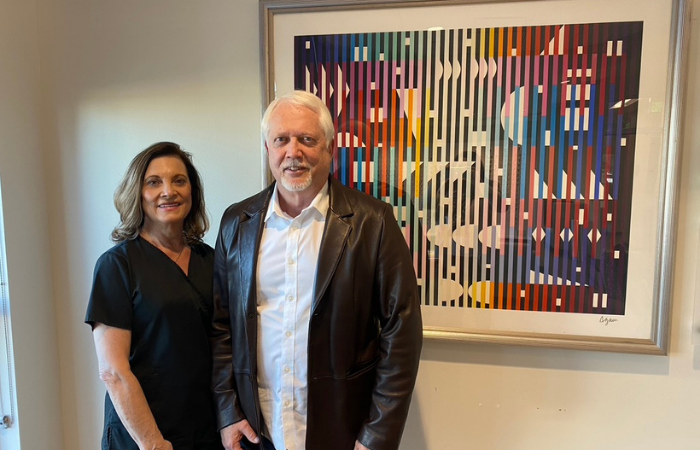
AS TOLD BY TERRY L. DAWSON , M.D.
I practiced ophthalmology for 40 years in Cullman, Alabama, before retiring two years ago. When I look back at my career, I often reflect on my residency at the Eye Foundation Hospital (EFH), now known as Callahan Eye Hospital where I experienced several highlights of my career.
Immediately following my medical school graduation from UAB, and before my residency began, the EFH and the UAB Alumni Association graciously facilitated my three-month externship at the Moorfields Eye Hospital in London, England, the largest eye hospital in the world. While there, I was able to view some of the very first scans of the periorbital area using computerized axial tomography, then called EMI scans, developed by the Electric and Musical Industries company in the 1970s in England. I was also able to observe the effects of socialized medicine that was adopted in England following WWII. I noted the benefits of universal health care coverage by the British National Health Service and learned that, sadly, it was at the expense of adequate medical equipment and personnel. Patients also incurred long waiting times for elective surgeries and subspecialty referrals.
I am particularly grateful for the excellent training I received in treating cornea and anterior segment disorders from Roswell Pfister, M.D. Because of him and Dr. Alston Callahan, who trained me in oculoplastic surgery, I discovered I knew more than my examiners in these areas at my oral board certification exams.
I learned the early techniques of intracapsular and then extracapsular cataract surgery, and my residency class was afforded the opportunity to learn phacoemulsification from its founder, Charles Kelman, M.D., at the Manhattan Eye, Ear and Throat Hospital. I was trained in implanting the first intraocular lenses, which were iris fixated, and thankfully obviated the optical distortions of aphakic spectacles.
All of this prepared me for the 40-year evolution of small incision cataract surgery, posterior chamber IOL implantation, and the implantation of astigmatic and multifocal IOL lenses. I developed a RK and PK refractive surgery practice and retired just before Lasik became the norm.
I acquired an interest in dry eye disease and the beneficial prescription of androgen supplementation in its treatment thanks to the pioneering research of David Sullivan, Ph.D., at Harvard Medical School. My excellent corneal training and background in organic chemistry allowed me to collaborate with Leiter’s compounding pharmacy in California to formulate a non-irritating aqueous soluble testosterone eyedrop. I successfully treated many patients locally and some internationally with severe dry eye symptoms, and Ophthalmology Times (Nov.15, 2015) published an article I wrote regarding my experience with this treatment.
I know my career would have been entirely different if I had not completed the residency program at EFH. I am so thankful for my residency experience there, and I know that the program is still teaching innovative, experiential methods to shape the next generation of ophthalmologists. My wife and I are so humbled to have the opportunity to give back. Agam, an Israeli, is considered by some to be the father of optical art and an appropriate artist to showcase at the EFH and the excellent training of its residency doctors. We hope others will enjoy this Agam artwork as we have.
Terry L. Dawson, M.D., Residency at the Eye Foundation Hospital, 1976-1979
This artwork will be displayed at the Gardendale and Hoover locations for patients to enjoy after receiving eye care.
